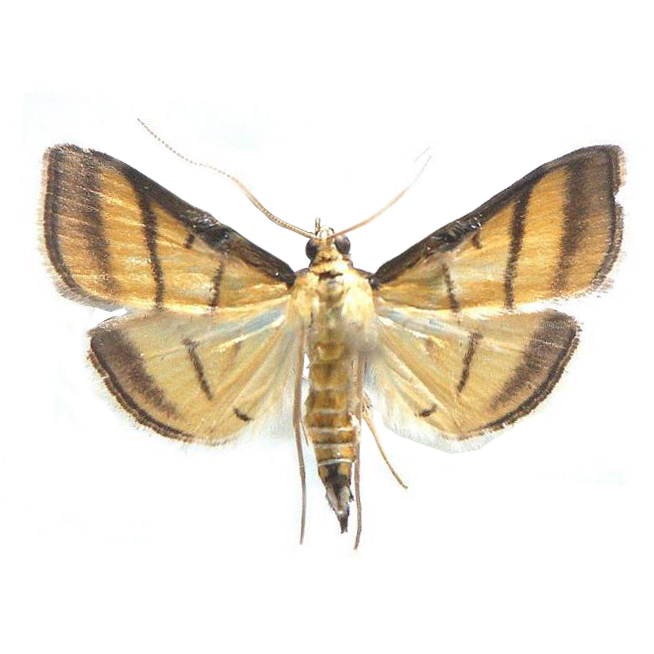


| Latin Name | Cnaphalocrocis medinalis |
| Common Name | Rice leafroller |
| Biology | Adults exhibit nocturnal habits with strong phototaxis, laying eggs on the undersides of rice leaves. Larvae spin silk to roll rice leaves into leaf sheaths, feeding on mesophyll tissues and creating white linear lesions. Severe infestations cause entire fields to develop bleached foliage. As a migratory pest, this species undergoes seasonal north-south movements in China, completing multiple generations annually under warm and humid conditions. |
| Damage | Primary hosts include rice, wheat, and corn (Poaceae family). |
| Distribution Regions | Asian rice-growing regions |
| Monitoring | Pheromone lures mimic natural sex pheromones to attract male insects into specialized traps for population monitoring and suppression. As a core IPM component, monitoring enables early risk detection and targeted control. Mass trapping reduces mating opportunities to curb offspring populations. Protocols: ●Use only with matched traps. ●15-45 traps/hectare,replace/replenish every 4-6 weeks. ●Wear gloves or wash hands with detergent when switching lure types. ●Refer to trap-specific hanging instructions. |
| Recommended Traps | Delta Trap, Wing Trap |

Teilen Sie Ihre Kontaktinformationen, um präzise passende Pheromonlösungen zu erhalten. Sollte unser bestehendes Portfolio keine optimale Lösung bieten, initiiert unser Synthesechemie-Team eine kundenspezifische Entwicklung – vom Molekülstrukturdesign bis zur skalierten Produktion.